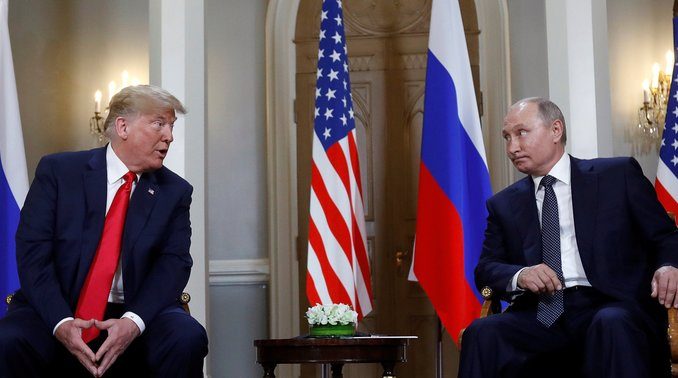
In News
The United States has pulled out of the Cold War-era Intermediate-Range Nuclear Forces (INF) treaty with Russia.
The INF Treaty
- The treaty was signed between the USA and Soviet Union (later Russia) in 1987 that banned all land-based ballistic and cruise missiles with nuclear capability with a short range of 500-1000 km and an intermediate-range of 1000-5,500 km.
- Over 2500 missiles were eliminated by 1991.
American Withdrawal
- It was President of the United States Mr. Donald Trump who announced in October 2018 that the US would withdraw from the treaty due to noncompliance by Russia.
- In February 2019, the treaty was suspended and on 2nd August 2019, the US withdrew from the treaty.
- With the end of the treaty, the race for arms has now begun between the two superpowers.
- Already, the United States and Russia are planning to test many new intermediate-range missiles though they are unlikely to be deployed against each other.
Is Russia The Real Target?
- Many experts believe that the unilateral withdrawal of the US from the treaty is not entirely due to Russia but due to the growing threat from China to the US, which has already amassed many short to intermediate range missiles.
- China has placed missiles in southeast China that can target Taiwan, and in islands closer to Japan and India. Some missiles of China can also target Guam, a region controlled by the USA in the Pacific.
- For these reasons, America believes China as its long-term strategic rival.
- Also, questions were being raised of the timing of the withdrawal as a nuclear confrontation with North Korea and Iran is becoming possible by the day.
- This has prompted worries in Europe and Asia.
NATO Blames Russia
- NATO calls put Russia for the US’s withdrawals. It calls pout Russia for not taking its international obligations seriously and not complying to it.
- It further points to the threat posed to the Allied Security due to Russia’s 9M729 missile.
9M729
- Novator 9M729 or SSC-8 is a ground-launched cruise missile which Russia flight-tested in November 2018.
- The missile was labeled as a “missile of concern” by the American administration.
- It is this missile that led to the fall out of the INF treaty.
India’s Intermediate-Range Missiles
- India possesses and deploys intermediate-range nuclear missiles like Agni III, Agni IV, and Prithvi. So far, there is no restriction on production and deployment of these missiles by India as the country is not a signatory to the Nuclear Nonproliferation Treaty (NPT).
- India is actively expanding its arsenal as it is required to counter the threats posed by Pakistan and China, both nuclear-capable countries.
Conclusion
INF treaty was the major confidence-building measure for the world that the superpowers will not use their nuclear weapons at their whims and cause destruction to the world. But, with the withdrawal of the US from the treaty and possible violations by Russia, the world will witness a new arms race as it was during the Cold War days. But this time, countries like China, India, Pakistan, and Iran are added to the list and they will aim to stockpile missiles to defend their countries.

Leave a Reply
You must be logged in to post a comment.